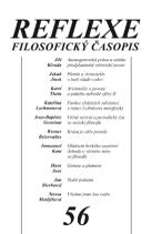Sympathy and Spatiality of Passions in Hume’s Treatise
The article discusses Hume’s theory of sympathy in Book II of his Treatise of Human Nature with special regard to the social function of sympathy as well as to the constitution of one’s own self in indirect passions. Two things are pointed out as important for understanding Hume’s theory, even though they tend to be overlooked by many commentators. It seems clear that – in the context of sympathy – Hume does not treat ideas of passions as weaker copies or shadows of impressions of passions. This opens up an important role for the sympathetic sharing of emotions, for such sharing is a necessary condition of proper intersubjective relations among persons. Furthermore, Hume does not claim that passions simply spread by emotional infection, but rather that human mind has a natural tendency to take over emotions of other people. However, this tendency clashes with other principles of human nature. The second part of the article poses a question which apparently has not been raised so far. Given the spatially unextended nature of passions, how are passions, according to Hume, related to bodily expressions.
Backlinks: Reflexe 54
